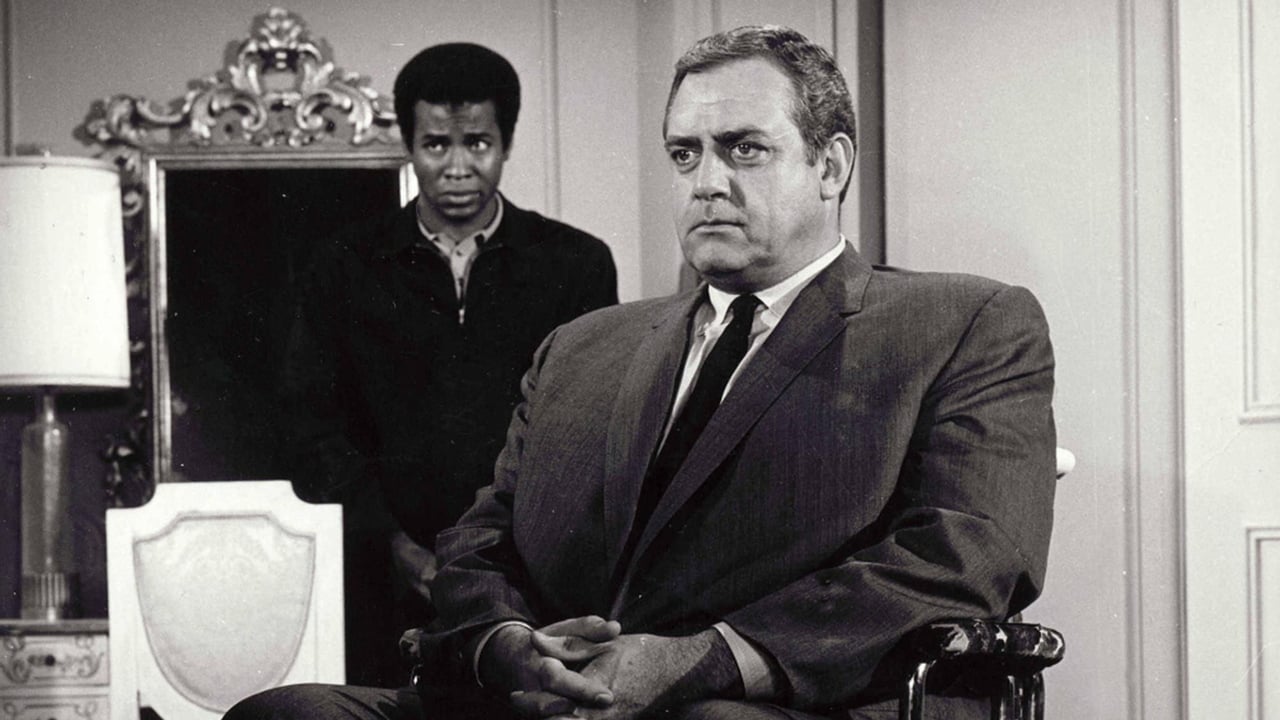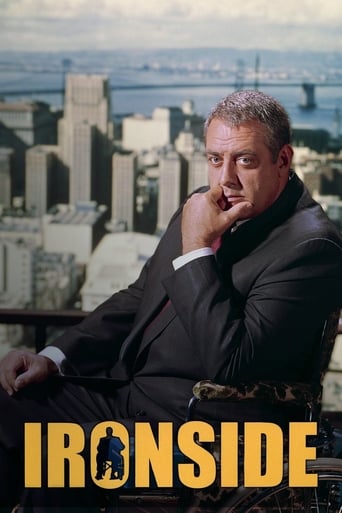

I think this is a new genre that they're all sort of working their way through it and haven't got all the kinks worked out yet but it's a genre that works for me.
... View MoreWow! Such a good movie.
... View MoreLack of good storyline.
... View MoreI wanted to like it more than I actually did... But much of the humor totally escaped me and I walked out only mildly impressed.
... View MoreI have discovered back then Ironside when I was a child. I must have seen one or two seasons back then. Some months ago, I had an opportunity to buy the seasons on DVD, this is what I did and I watched all the 8 seasons. Raymon Burr's acting in Ironside is far superior than in Perry Meason. Ironside various episode featured and treated about civil rights problems, mob syndicates, political bribes, murder for hire and the Vietnam war. We will see evolve Mark Sanger', first Ironside's aid then becoming a cop and an attorney, also during the first four seasons the female officer was Eve Whitfield which I liked more than her successor Fran Belding. Some great guest stars like Joseph Campanella, Gary Collins, Vera Miles, Johnny Seven,Richard Anderson, William Shatner, Bill Bixby, David Carradine to name a few appeared in several episode. What was pleasing in Ironside was the use of rethorics and the way of leading an investigation. The plots in the different episodes were cleverly thought and the action was there. I recommend this series which is iconic and classic.
... View MoreThere are precious few actors who can create two successful television characters. More recent examples include Mary Tyler Moore (Mary Richards and Laura Petrie) and Bob Newhart (Bob Hartley and Dick Loudon). In 1966, Burr completed a nine-year run as the most recognizable attorney on television. In 1967, returning to television, his challenge was to create a new character that wouldn't stand in Perry Mason's shadow. The result was Ironside -- a rough, former chief of the San Francisco police forced to retire when an attempted assassination leaves him paralyzed. (The theme music is reprised in "Kill Bill Vol. 1", whenever the Bride flashes back on her paralyzing injuries.) Bob Ironside had none of Perry Mason's polish, frequently spoke without thinking, and enjoyed fast cars as much as he relished good police work. He was given a special task force that included a regular joe beat-cop, Ed Brown (even in the sixties, a more vanilla name was never given a character); a highbrow, educated female detective (Eve Whitfield); and a troubled black youth, Mark Sanger, who was to Ironside what Charlie Young is to President Bartlet on "The West Wing". Instead of the Los Angeles setting of Perry Mason, Ironside was in San Francisco. In addition, while Perry Mason kept the lights on at CBS for nearly a decade, Ironside was a steady performer for NBC for almost as long. The show was an instant critical and commercial success.I think the reason Ironside is not as popular in reruns now as it was in the late 70s and early 80s is it will always be in the shadow of Mason, and that's a shame. The two shows are not the same, and there are many memorable episodes of Ironside. One in particular features Ironside isolated in his apartment, being stalked by a killer, that always reminded me of the climactic scene in "Rear Window" -- in which the killer was played by Raymond Burr! One of my favorite lines of dialogue, from the pilot, was his ribbing of his female detective: "By all means, ask Detective Whitfield. She's had the benefit of a classical education." That line -- which would never have passed Perry Mason's lips -- is a good sample of Ironside's tone through the series.
... View MoreI didn't know much about Ironside, apart from my mum, explaining to me what Raymond Burr did apart from Perry Mason. So, in 1999, the BBC started to do re-runs of it, and i watched a few, and I liked it alot. Channel five showed the 1967 TV Movie, and the Priest Killer (1971, scary and a bit controversial) and it was the best i've ever seen. It blows all the other cop shows out of the water, and quincy jones's score, is addictive. the support cast, proved their worth, especially Ed and Mark, and Eve's razor sharp wit. It shows that people (the characters) who are from different backgrounds Mark, a young black ex-con, Eve's upper class background, to Ed's (i'm assuming working class catholic boy, who lost his way when his fiance died) can gel quite well, but, that was what San Francisco was like from 1967 onwards, a melting pot, of people from different backgrounds.It is worthy of a big screen remake, but they have to it justice and not go for the starsky and hutch spoof hollywood have managed to botch together. It needs a director who is a fan, rather than somebody who sees this as another remake of an old show, it's more than that. and what i can't get, is that what actually happened to the actors from Ironside, Galloway has appeared on Perry Mason a couple of times, looking 10 years older than his real age! but in comparison to him in Ironside galloway aged 30 was a catch.enough of my female observations. It's a great programme, but i think it needs to be brought to attention of a new audience, i'm 22 years old, and i think that the programmes of today are trash!!
... View MoreIf Perry Mason was Raymond Burr's defining role, then this was his second most famous role. This show proved that you didn't need a lot of violence to be a great detective show. This was more cerebral than most of the shows that were around at the time. Also the supporting cast of Don Mitchell, Don Galloway, Barbara Anderson and, later Elizabeth Baur, were all great as Ed, Mark, Eve and Fran respectively. The most compelling character on the show though was Mark. We got to see him evolve from Ironside's body guard, to a police officer and, finally, becoming an attorney. Too bad they don't make shows like this anymore.
... View More